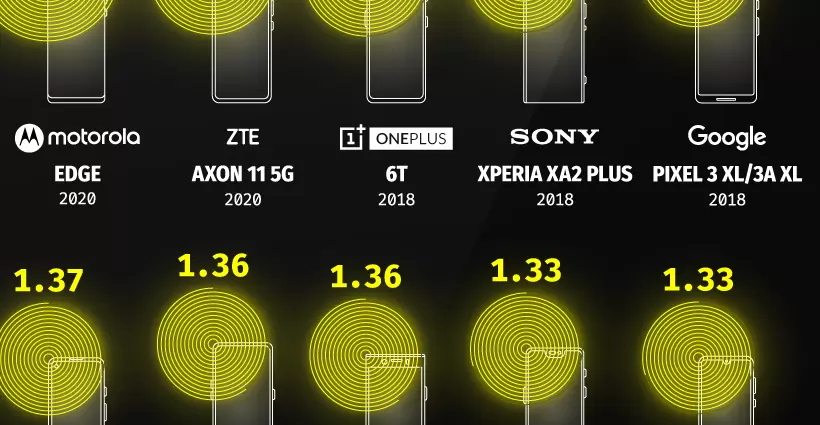In today’s hyper-connected world, smartphones are practically an extension of ourselves. We hold them close to our ears, carry them in our pockets, and even sleep next to them. But have you ever stopped to consider the radiation they emit?
Smartphones emit non-ionizing Radiation, a different kind from the harmful radiation emitted by X-rays or nuclear materials. This radiation is measured by the Specific Absorption Rate (SAR), which signifies the amount of radiofrequency energy absorbed by the body.
While there’s no conclusive evidence that low-level radiation from smartphones poses significant health risks, some users express concern. Let’s delve into the world of SAR and explore which smartphones currently hold the crown (or should we say, the hot seat) for the highest radiation emissions.
Understanding SAR and Regulations
The SAR is measured in watts per kilogram (W/kg). Regulatory bodies around the world, including the FCC (Federal Communications Commission) in the US and ICNIRP (International Commission on Non-Ionizing Radiation Protection), establish safe exposure limits. In the US, the FCC limit is 1.6 W/kg for head exposure and 4.0 W/kg for body contact.
It’s important to remember that SAR levels depend on various factors, such as the phone’s power output, the network connection being used, and how close the phone is held to the body.
Leaders of the Radiation Pack
While smartphone manufacturers strive to optimize efficiency and minimize radiation output, some models currently top the charts for the highest SAR. Here are a few contenders:
-
Motorola Edge: This phone holds the dubious honor of emitting the most radiation among contemporary models, with a staggering SAR of 1.79 W/kg.
-
ZTE Axon 11 5G: Following closely behind is the ZTE Axon 11 5G, clocking in at 1.59 W/kg.
-
OnePlus 6T: This once-flagship phone boasts a SAR of 1.55 W/kg.
-
Sony Xperia XA2 Plus: Though not the newest model, the Sony Xperia XA2 Plus emits 1.41 W/kg of radiation.
-
Google Pixel 3 XL and 4a (tie): Rounding out the top five are these two Google phones with a SAR of 1.39 W/kg.
The Lighter End of the Spectrum
While some phones seem to be running a bit hot (figuratively), others excel in minimizing radiation output. Here are a few examples:
-
Apple iPhones: iPhones in general tend to have lower SAR ratings. The latest iPhone 15, for instance, comes in at a user-friendly 0.98 W/kg.
-
Samsung Galaxy Series: Many Samsung Galaxy phones boast SAR values well below 1 W/kg.
Minimizing Your Exposure
Even if your phone falls on the lower end of the SAR scale, here are some practical tips to further reduce radiation exposure:
-
Use a headset: Talking on a headset keeps the phone away from your head, significantly reducing absorption.
-
Limit phone calls: Opt for texting or video calls when possible, minimizing direct contact with the phone during communication.
-
Carry your phone strategically: Avoid keeping your phone in your pocket, especially near your body. Consider a bag or purse instead.
-
Don’t sleep with your phone: The constant radiofrequency emissions while you sleep can be unnecessary exposure.
The Final Verdict
The current scientific consensus suggests that low-level radiation from smartphones likely doesn’t pose a major health threat. However, if you’re concerned, opting for a phone with a lower SAR rating and practicing the precautions mentioned above can offer peace of mind. Remember, the SAR is just one factor to consider when choosing a smartphone. Battery life, camera quality, and other features also play a crucial role.
The Future of Radiation and Smartphones
As technology evolves, so too will smartphone design and output. Manufacturers are continuously seeking ways to optimize efficiency and minimize emissions. Staying informed about the latest research and developments can empower you to make informed choices about the technology you integrate into your life.
Conclusion
Smartphones are undeniably woven into the fabric of our lives. While the science on the health risks of low-level radiation from these devices is still inconclusive, understanding SAR levels and taking steps to minimize exposure can provide a sense of control.
By being aware of the phones with the highest radiation emissions (like the Motorola Edge) and those with lower ratings (such as iPhones), you can factor this information into your purchasing decisions. Additionally, simple practices like using a headset and keeping your phone at a distance can further reduce any potential risks.

